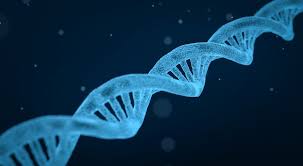Researchers at the University of Washington have discovered a novel DNA-sensing pathway that launches an antiviral response to foreign genetic material in human cells.
Triggered by an enzyme called DNA protein kinase (DNA-PK), the newly found pathway is independent of the cGAS-STING pathway—until now considered the main regulator of mammalian innate immune responses to DNA—and is missing or inactive in mouse cells. The finding raises questions about the promise of therapies that target cGAS-STING for immune modulation, researchers report today (January 24) in Science Immunology.
“This seems to be a DNA-sensing pathway that’s been completely overlooked—probably because much of the research that has been done has used murine systems,” says Christian Holm, who researches cGAS-STING at Aarhus University and was not involved in the study. Previous work on antiviral responses has focused almost exclusively on cGAS-STING, he adds. “Now this comes along and says there’s this other pathway . . . that seems to be completely independent of STING and might be very important.”
First described in 2013, the cGAS-STING pathway plays a critical role in the cell’s innate immune reaction to viral infection. Upon detecting cytosolic DNA (usually a tell-tale sign of viral entry), the cGAS enzyme binds to the transmembrane protein STING to trigger the production of interferons and other antiviral responses.
The pathway has become a popular target in drug development, with researchers trying to harness STING’s activity for cancer immunotherapy, or to calm it in autoimmune diseases in which innate immune responses are overactive.
The University of Washington’s Dan Stetson tells The Scientist that he and his team were studying the effects of tumor-promoting viruses on cGAS-STING when they stumbled across the novel pathway. Graduate student Katelyn Burleigh generated human cell lines lacking STING, he says, and found that they still produced interferons when transfected with foreign DNA.
Further assays using various human cell types and chemical inhibitors indicated that DNA-PK, an enzyme known for its role in detecting and responding to DNA damage in the cell nucleus, was sensing the foreign DNA in the cell cytoplasm and launching its own, STING-independent response.
It’s not the first time DNA-PK has been implicated in antiviral defenses. The University of Cambridge’s Geoffrey Smith and Brian Ferguson reported in 2012 that DNA-PK in mouse and human cells could promote interferon production in response to transfection with foreign DNA. That study, however, concluded that DNA-PK was likely triggering the response via STING, not independently of it.
“It’s nice to see that another group has found an important role for DNA-PK in sensing foreign DNA,” Smith tells The Scientist, adding that the Washington team’s paper presents “some data supportive” of the conclusion that the new pathway is STING-independent.
He notes that assays the team carried out using DNA-PK inhibitors seemed to influence antiviral responses differently depending on cell type—a result that Stetson says might have do with interactions between the DNA-PK and gCAS-STING pathways in the various cell lines the team used. In some cases, “the two pathways may antagonize each other,” Stetson writes in an email to The Scientist. “It is something we are interested in pursuing.”
Examining other mammalian cell lines, Stetson’s team detected evidence of the novel DNA-PK pathway in non-human primate cells and in rat cells. But the researchers couldn’t find the pathway in mouse cells, where most preclinical research on cGAS-STING therapies has been conducted.
Alexiane Decout, a research scientist studying STING at EPFL in Switzerland who saw a preprint of the paper on bioRxiv last year, says she’s not surprised by the finding, because previous studies already indicated differences between human and mouse antiviral responses. “The mouse cGAS-STING pathway is much more easily activated than the human one,” she says. Because of that pathway’s lower activation in human cells, “it makes perfect sense [that those cells] have another DNA-sensing mechanism.”
The presence of this second mechanism could have implications for efforts to modulate innate immune responses in patients with autoimmune disease. Stetson and colleagues propose in their paper that drugs designed to dampen cGAS-STING activity might need to be paired with DNA-PK inhibitors (several of which are in clinical development) to be effective—although given DNA-PK’s additional role in DNA repair, it’s not clear how feasible such inhibition would be.
There are also potential applications for the novel DNA-sensing pathway in immunotherapy, notes Leticia Corrales, who has patent applications on STING-targeting compounds for cancer treatment and works at the pharmaceutical company Boehringer Ingelheim in Vienna.
She says that enhancing the innate immune response via DNA-PK could help promote antitumor immunity. However, “first we have to confirm that in humans this pathway is relevant for antitumor immune responses,” she says, adding that researchers would have to be “very cautious about the toxicity aspects of using this approach.”
Stetson, who has a patent pending on DNA-PK modulation for disease treatment, says that his team is now exploring whether the newly discovered pathway promotes immunity to viral infection, and how the DNA-PK enzyme manages its dual roles of promoting repair of DNA damage in the nucleus and triggering responses to foreign DNA in the cytoplasm.
For therapeutic purposes, “the long-term goal would be to figure out how to manipulate that,” he says, “and deliberately turn what normally would be repair into a really potent innate immune response.”







